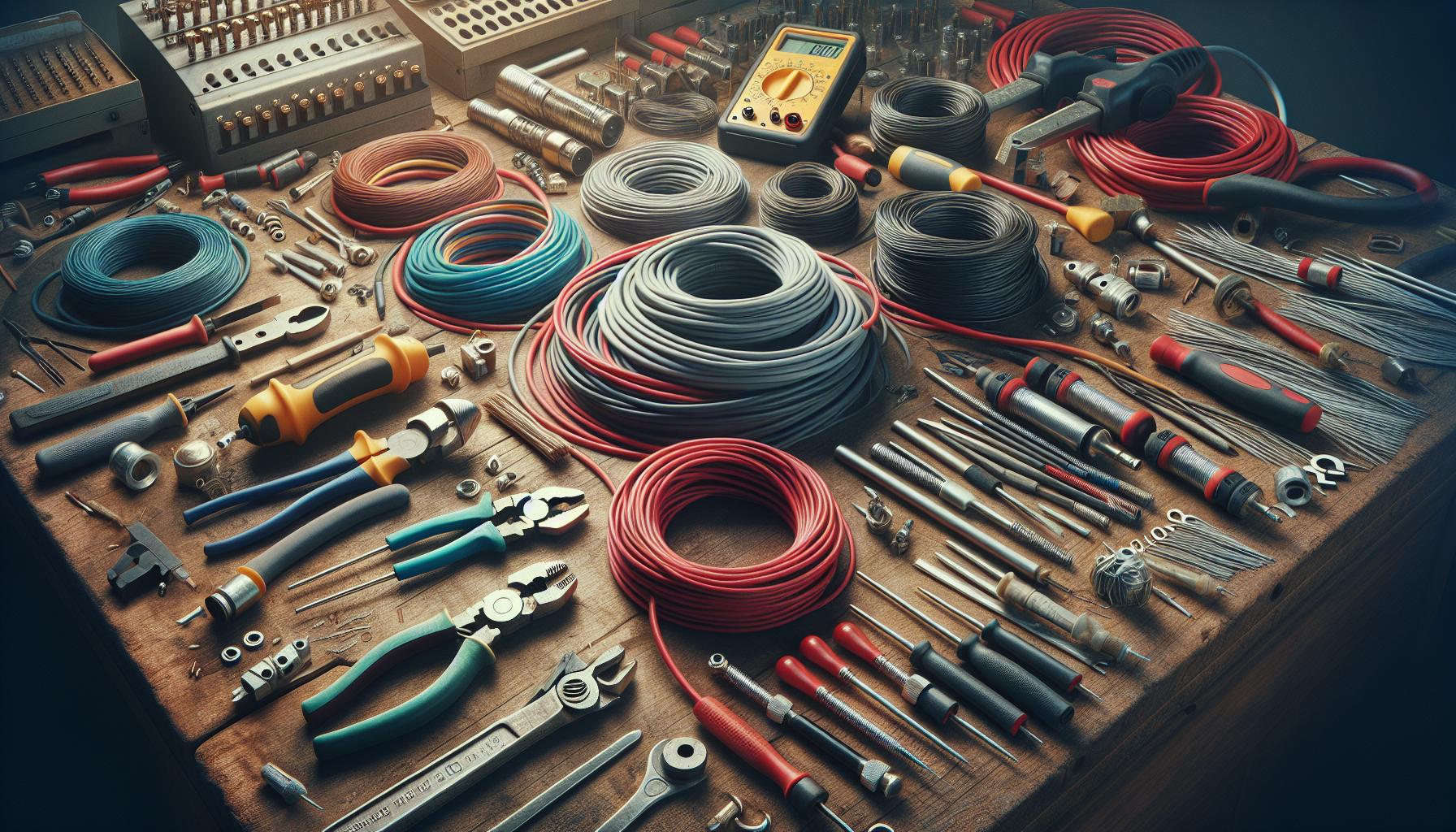Choosing the right gauge wire for a 3000 watt amplifier is crucial for optimal performance and safety. Many enthusiasts underestimate the importance of wire gauge, but it directly affects power delivery and sound quality. Using the wrong gauge can lead to overheating, voltage drops, and even damage to the amp or vehicle’s electrical system.
Understanding the relationship between power, distance, and wire gauge helps ensure a smooth audio experience. Whether setting up a car audio system or a home theater, selecting the appropriate gauge wire can make all the difference. In this article, he’ll explore the best practices for wiring a 3000 watt amp, providing clear guidance to help achieve the best sound without compromising safety.
What Gauge Wire For 3000 Watt Amp
Amplifier power influences audio performance significantly. Knowing how to manage this power through proper wiring is crucial for achieving optimal sound quality.
The Importance of Proper Wiring
Proper wiring is essential for an amplifier’s efficiency and safety. Using an incorrect gauge can result in overheating, which may lead to equipment failure. Selecting the right wire gauge ensures minimal voltage drop, thereby maintaining sound clarity and system reliability. Safe installation requires attention to gauge recommendations based on the amplifier’s wattage and distance from the power source.
Power Requirements for a 3000 Watt Amp
A 3000 watt amplifier demands specific power requirements to function effectively. Typically, such amplifiers require a minimum of 120 amperes to operate safely and efficiently. When calculating wire gauge, factors such as distance from the battery and power loss must be considered. The American Wire Gauge (AWG) standard recommends using 2 AWG or 4 AWG wire for runs up to 20 feet. Longer distances may necessitate thicker cables, such as 1 AWG, to offset voltage drop and ensure that the amplifier performs at its peak without risking damage.
Wire Gauge Basics

Understanding wire gauge ensures optimal performance and safety when installing an amplifier. Proper wire selection prevents overheating and voltage drops, which can damage electrical systems.
What Is Wire Gauge?
Wire gauge refers to the diameter of electrical wire and its ability to carry current safely. Thicker wires (lower gauge numbers) handle more current and reduce resistance. For a 3000 watt amplifier, choosing the right gauge facilitates efficient power transfer, crucial for sound quality.
The American Wire Gauge (AWG) System
The American Wire Gauge (AWG) system standardizes wire diameter measurements in the United States. Gauge numbers decrease as the wire diameter increases. For example, 2 AWG wire measures approximately 0.2576 inches in diameter, while 4 AWG wire measures about 0.2043 inches. This system provides a reliable reference for selecting the appropriate gauge for various applications, including high-power amplifiers.
Choosing the Right Wire Gauge for 3000 Watt Amp
Selecting the correct wire gauge for a 3000 watt amplifier is critical for optimal performance. The gauge directly impacts current flow, safety, and sound quality.
Recommended Wire Gauges
For a 3000 watt amplifier, the following wire gauges are recommended based on distance:
| Distance (Feet) | Recommended Gauge |
|---|---|
| Up to 10 | 4 AWG |
| Up to 15 | 2 AWG |
| Up to 20 | 1 AWG |
| Over 20 | 0 AWG |
Using 2 AWG or 4 AWG wire suffices for runs up to 20 feet, but 1 AWG is necessary for longer distances. Thicker wires reduce voltage drops, ensuring that the amplifier receives adequate power.
Factors Influencing Wire Gauge Selection
Several factors influence the selection of wire gauge:
- Power Rating: Higher wattage amplifiers demand thicker wires.
- Distance: Longer wire runs require a larger gauge to minimize voltage drop.
- Current Load: Understanding the amperage needed for the system helps in selecting the right gauge.
- Installation Environment: Consider temperature and surroundings, as extreme conditions can affect wire performance.
Considering these factors ensures safe and efficient wiring for a 3000 watt amplifier, contributing to enhanced sound quality and system reliability.
Potential Risks of Using Incorrect Wire Gauge
Using an incorrect wire gauge poses significant risks to both equipment and safety. Understanding these risks aids in making informed wiring decisions for a 3000 watt amplifier.
Overheating and Fire Hazards
Using an inadequate wire gauge leads to excessive heat generation. Insufficient wire thickness increases electrical resistance, causing the wire to overheat. Overheating can result in damage to the wire insulation, leading to potential short circuits. A continuous current flow through the overheated wires may ignite nearby materials, creating fire hazards in vehicles or homes. For a 3000 watt amp, ensuring wire gauge matches the current requirements is crucial to minimize these risks.
Impact on Sound Quality
Incorrect wire gauge affects audio performance significantly. Thinner wires introduce higher resistance, which can lead to voltage drops. Voltage drops result in reduced power delivery to the amplifier, impacting its ability to drive speakers effectively. This diminished power affects sound clarity and volume. High-performance amplifiers rely on adequate current supply for optimal audio output, emphasizing the need for appropriate wire gauge. Proper wiring ensures the amplifier achieves its full potential, maintaining sound integrity and system reliability.
Choosing the right wire gauge for a 3000 watt amplifier is crucial for achieving optimal performance and safety. Proper wiring not only prevents overheating and voltage drops but also enhances sound clarity and system reliability. By understanding the power requirements and distance considerations, one can select the appropriate gauge to ensure efficient operation. This attention to detail protects both the amplifier and the vehicle’s electrical system while delivering the best audio experience possible. Prioritizing the correct wire gauge is a small investment that pays off in the long run with improved sound quality and peace of mind.


